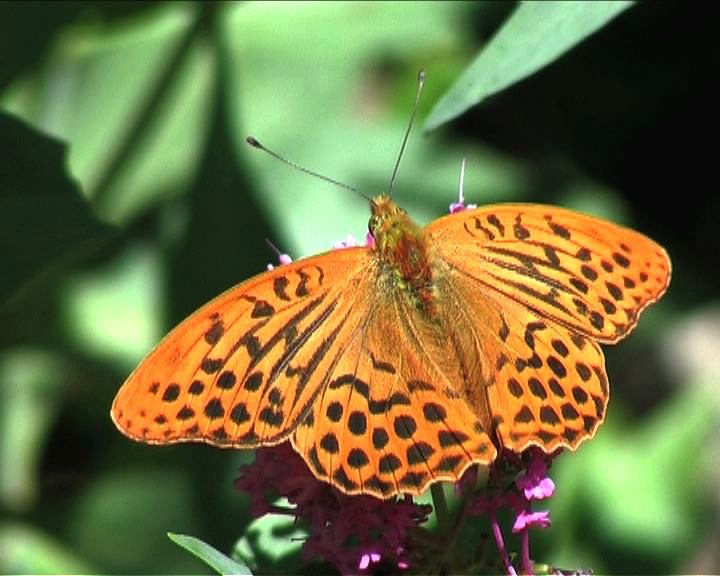

Silver-washed fritillary (Argynnis paphia (Linnaeus, 1768))
Silver-washed fritillary (Argynnis paphia)
The Silver-washed Fritillary, belonging to the family Nymphalidae and the subfamily Heliconiinae, flies, in the Midi, in one generation, from early June to late September. It is one of the largest butterflies in Europe with a wingspan of 27 to 35 mm. The minority form, valesina Esper, with a grey background and greenish sheen, represents about 30% of the female paphia population. The butterfly frequents woodland edges, forest clearing and flowered places in wooded areas were it feeds on different flowers, essentially Red Valerian, Scabious and Buddleias.
For oviposition the female chooses pines, evergreens and fruit trees, with a rough bark and a diameter of at least 60 cm, located near the violets in a sunny spot, to lay their eggs. The creamy-white egg is laid singly on the bark, up to 4 m in height. The female revisits the same favourite tree trunk and places a dozen eggs in one afternoon. After hatching, the caterpillar goes to shelter from the cold, between the lichens, where it enters into diapause, without feeding, until spring. In early February, the caterpillar goes in search of violets. It mainly feeds at night and nibbles the edges of the leaf and rests during the day at the foot of the violets. Mature, the caterpillar reaches 38 mm in length.
Since 2003, the population of this beautiful butterfly is seriously declining in the region. It is important to better understand the causes of this alarming regression, in the hope to see this magnificent and emblematic butterfly flying in our Provencal hills.
